10F, Building B, Erqi Center, Erqi District,
Zhengzhou City,
Henan Province, China
Wit:+86 15138685087
(WhatsApp/Wechat)

10F, Building B, Erqi Center, Erqi District,
Zhengzhou City,
Henan Province, China
Wit:+86 15138685087
(WhatsApp/Wechat)
Recently, the first cross-Caspian China-Europe train (Shijiazhuang-Baku) in Beijing, Tianjin and Hebei sounded the whistle and set off from Shijiazhuang International Land Port in Hebei, fully loaded with machinery and equipment, silk screens, wallpapers and other goods, leaving the country from Horgos Port in Xinjiang, crossing the Caspian Sea through the port city of Aktau in Kazakhstan, and disembarking from the port of Alyat in Azerbaijan to transfer to rail transportation, and finally arriving in Baku, the capital of Azerbaijan, with a total distance of more than 7,800 kilometers and a transit time of about 15 days.

Departure by French Post DPD

Wuhan – Duisburg
This cross-Caspian China-Europe train adopts a rail-sea combined transport mode that connects rail transportation with sea transportation, which saves about one-third of the time compared to traditional sea transportation. “The opening of the cross-Caspian line has laid a solid foundation for the development of the “Southern Corridor” of the China-Europe Express and expanded the radiation range of the China-Europe Express.” Liu Jinpeng, general manager of Shijiazhuang International Land Port, said that in the future, the organization of train transportation will be optimized and more direct stations of the “Southern Corridor” of the China-Europe Express will continue to be expanded.
The first cross-Caspian China-Europe train in Beijing-Tianjin-Hebei is the 18th international route developed by Shijiazhuang International Land Port, opening a new chapter for Beijing-Tianjin-Hebei to actively participate in the construction of the cross-Caspian international transport corridor. This is a microcosm of the high-quality development of China’s China-Europe trains since this year and a vivid footnote to the high-level opening up and smooth domestic and international dual circulation of China’s China-Europe trains.
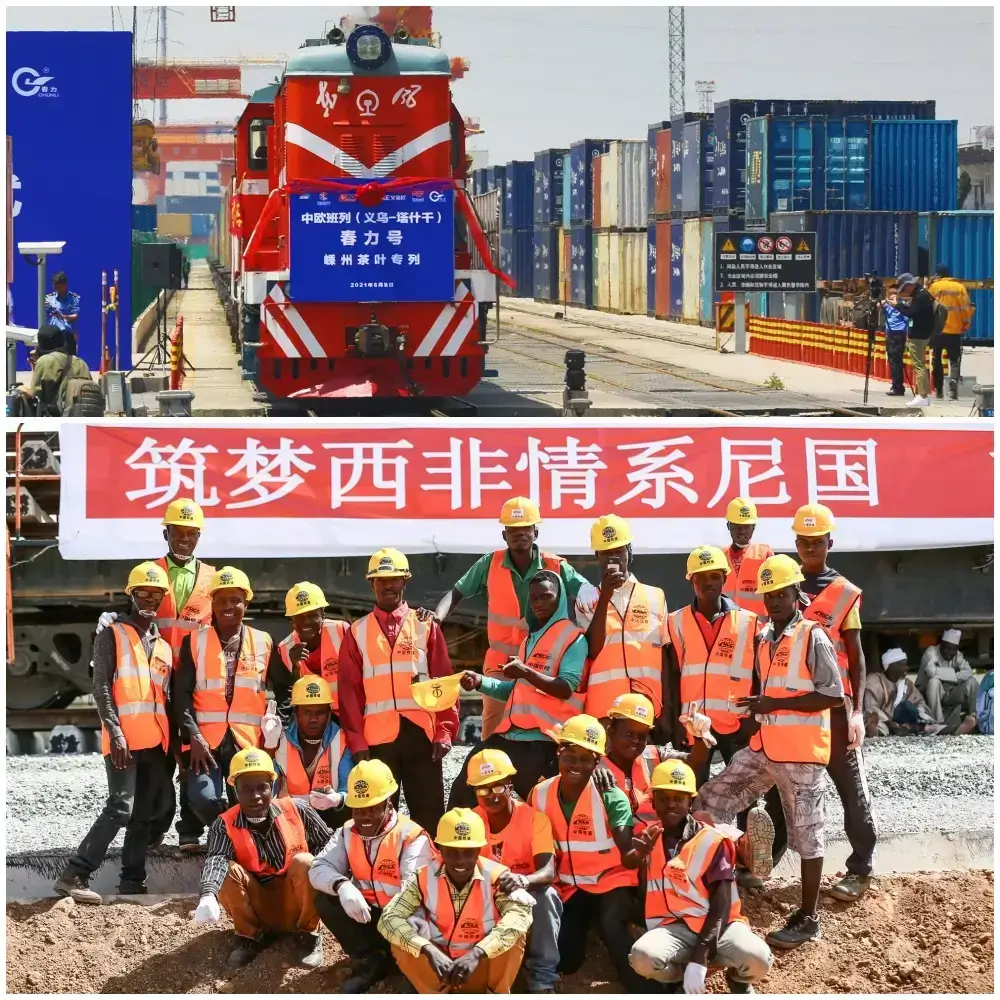
Ourchinastory-cover-beltandroadseries
The reporter learned from the China Railway Group that from January to July this year, a total of 11,403 China-Europe trains were launched, and 1.226 million standard containers of goods were shipped, an increase of 12% and 11% year-on-year respectively. Among them, 1,776 trains were launched in July, shipping 185,000 standard containers of goods, and more than 1,700 trains were launched in a single month for three consecutive months.
The head of the freight department of the China Railway Group said that since this year, my country has continued to improve the operation quality and efficiency of China-Europe trains, effectively ensuring the stability and smoothness of the international supply chain industry chain, and injecting new momentum into serving my country’s foreign trade development and high-level opening up.
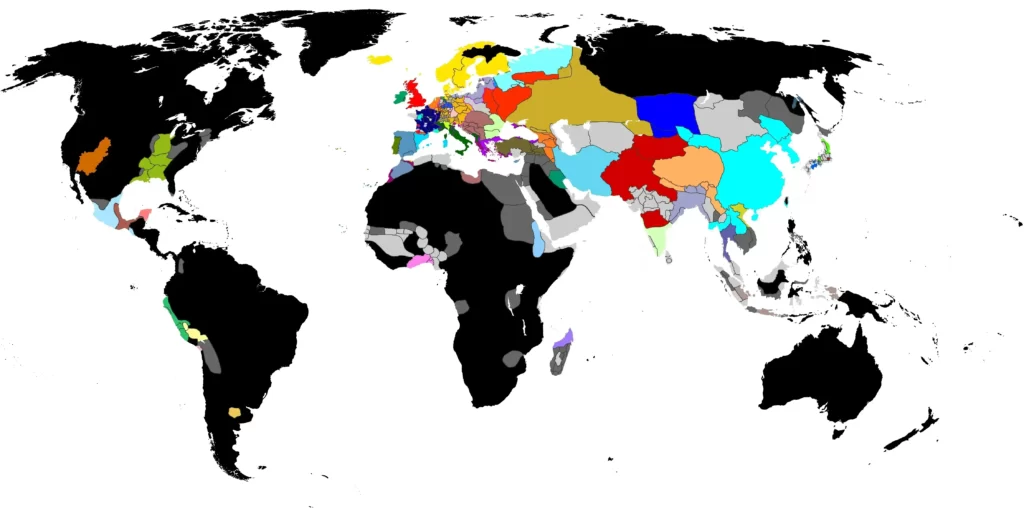
China train coverage map
According to data released by the China Railway Corporation, from January to July, the number of China-Europe trains running on the three main transport channels, namely the west (via Alashankou and Horgos Port), the middle (via Erenhot Port), and the east (via Manchuria, Suifenhe, and Tongjiang North Port), increased by 15%, 22%, and 2% year-on-year respectively.
In 2011, the “Yuxinou” international railway combined transport channel, the predecessor of the China-Europe train, was officially put into operation, starting from Chongqing, passing through Kazakhstan, Russia, Belarus, and Poland, and finally arriving in Duisburg, Germany. With one end connected to the Yangtze River Golden Waterway and the other end connected to the European continent, the China-Europe train (Yuxinou) has built a land-based international logistics channel that runs across the east and west with a total length of 11,000 kilometers, reducing the cost of transporting goods between my country and the European continent.

Duisburg, Germany – Xi’an

China-Portugal Foreign Trade Conference
From only one train a month at the beginning to more than 10 trains a day; from loading a single product at the beginning to covering thousands of goods now… Today, the China-Europe Express (Chongqing-Xinjiang-Europe) has built an international channel that is accessible to the world.
At the end of 2015, the construction of the Urumqi International Land Port Area started, which has the functions of completing the arrival, loading and unloading, assembly and disassembly, inspection and shipment of trains in one go, providing one-stop service for trains. In 2016, the China-Europe Express (Urumqi) Assembly Center was completed and put into operation. Three years later, the second phase of the assembly center expansion project was completed, which can meet the daily shipment demand of more than 20 trains, and the operation time of the train has been reduced to one-third of the original. At present, Xinjiang has 23 China-Europe Express routes, reaching 19 countries and 26 cities, forming a transportation pattern of multi-point departure, multi-location operation and multi-point arrival in Xinjiang.
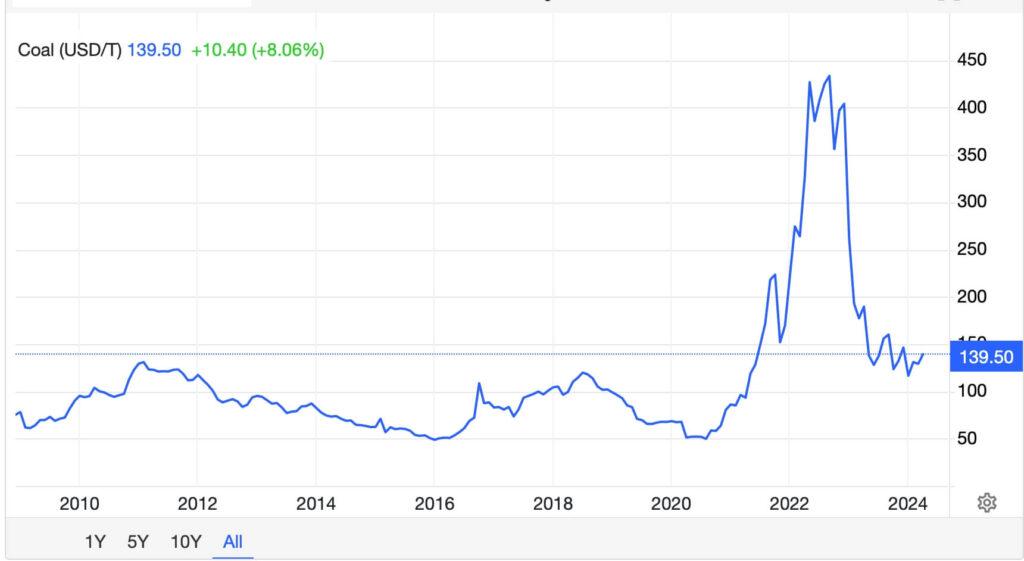
China-Coal-Prices-from-Trading-Economics
In June 2018, the first China-Europe Express train from Shijiazhuang International Land Port was successfully launched. Over the past six years, Shijiazhuang International Land Port has developed into a national first-class railway logistics base and a national comprehensive freight hub. “The freight volume has grown very fast. We are now working in three shifts and are on standby at any time.” Cui Ziliang, a dispatcher at Shijiazhuang International Land Port, said that Shijiazhuang International Land Port sends out 1 to 2 China-Europe trains of the same size every day, but it is still difficult to find a warehouse. At present, Shijiazhuang International Land Port has launched more than 1,600 China-Europe trains, carrying more than 160,000 standard containers of goods with a value of more than 30 billion yuan. This year, 26,700 standard containers of goods have been shipped with a value of more than 4.3 billion yuan. It is understood that the goods shipped by China-Europe trains are becoming increasingly rich. In addition to the popular Yiwu small commodities, southern Jiangsu
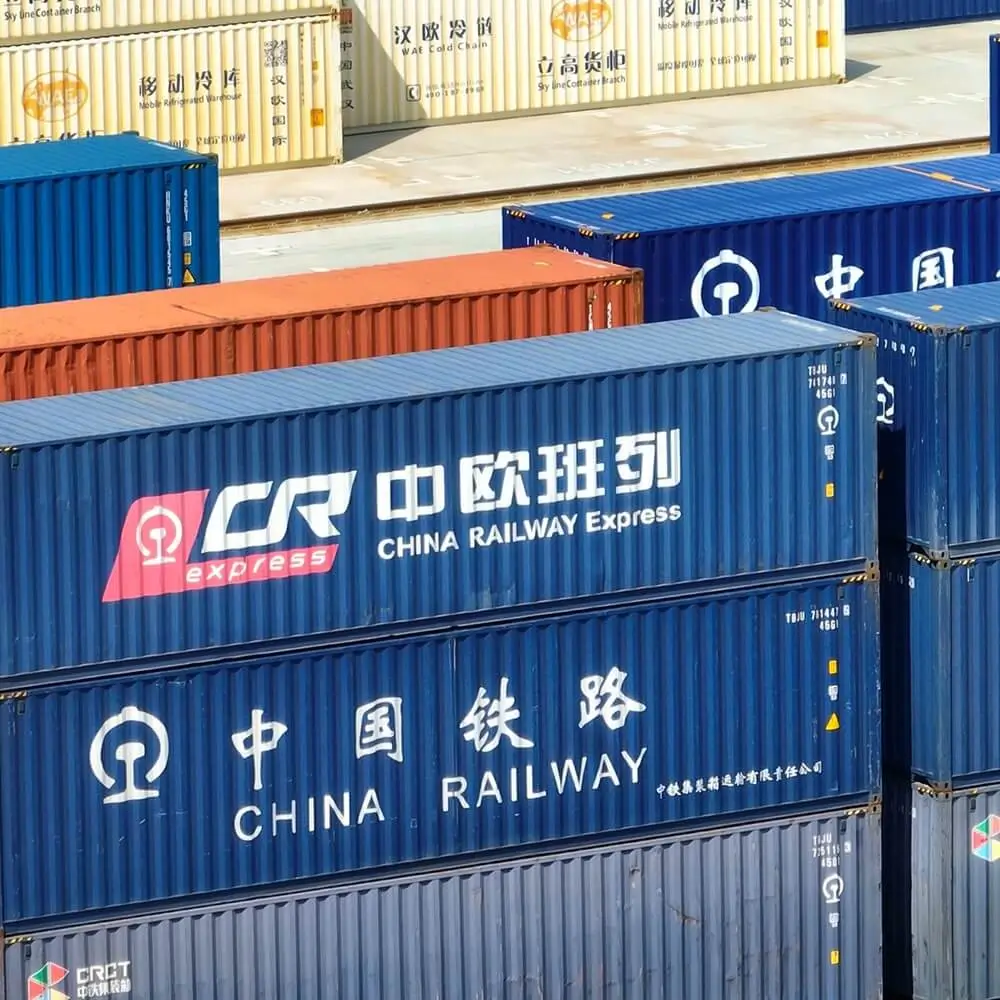
Ourchinastory-China Train
textiles and clothing, more competitive and high value-added photovoltaic components, auto parts, mechanical equipment, etc. are also constantly entering the European market. The categories of return goods have also gradually expanded from early wood, auto parts, etc. to electromechanical products, food, medical equipment, mechanical equipment, alcohol, etc., achieving diversified development. At present, the China-Europe Express trains transport more than 50,000 kinds of goods in 53 categories, and the comprehensive heavy box rate is stable at 100%.
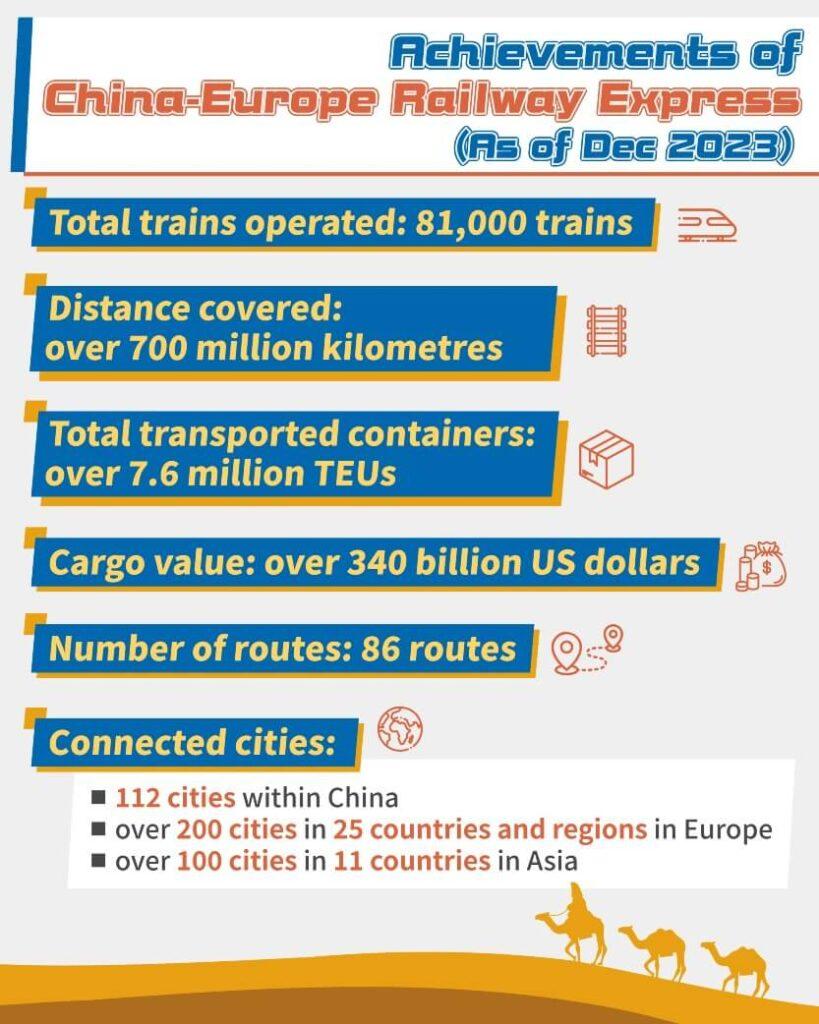
China-Europe trains reach cities
Nowadays, the “steel camel caravan” of the new era has been running for more than 10 years, attracting more and more companies to choose the China-Europe Express trains to transport goods with faster speed, lower freight rates and stronger assembly capabilities. At present, the China-Europe Express trains have reached 224 cities in 25 European countries and connected more than 100 cities in 11 Asian countries. A large number of international trade, supply chain services and other companies have taken root in the areas along the line. The China-Europe Express has injected new momentum to ensure the stability of the production and supply chain and promote China-Europe economic and trade exchanges, becoming a “golden train” full of development opportunities.
The head of the freight department of the China Railway Group said that in the next step, it will continue to promote the development of the China-Europe Express trains in the direction of higher quality, better efficiency and greater safety, and provide strong transportation guarantees for promoting the development of China-Europe trade and serving high-level opening up.





